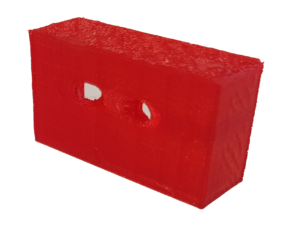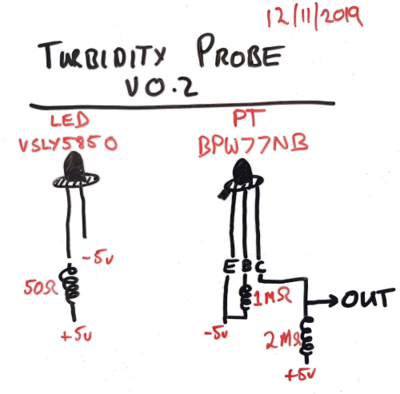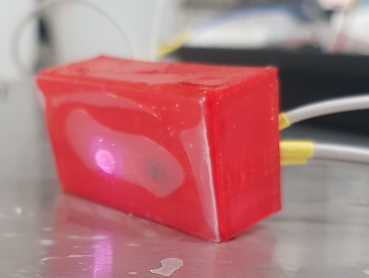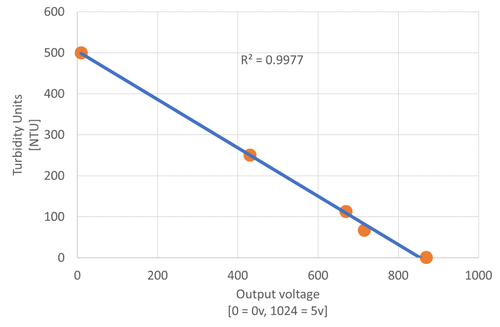Turbidity Sensor
12th November 2019 So we finally made some nice progress with the Turbidity Sensor design.
First step was to print our case using our 3D printer. Here it is:
Next step was to test out some hardware for the little guy. We bought two main things: (1) a LED that puts out 850nm wavelength and (2) a phototransistor. The details of the connection we used is here:
We also needed some resistors in the circuit, a 5v power supply and something to read the output (obviously, we used an Arduino)
Next step, put it all together and see if it works! So, we used some epoxy and wired this all up to make this sensor:
Next step, test the little bugger. We did this using turbidity solutions and a deep cylinder (at least 100mm deep). We tested five turbidity solutions ranging from 500 NTU to 1NTU (tap water). Here are the results we got:



